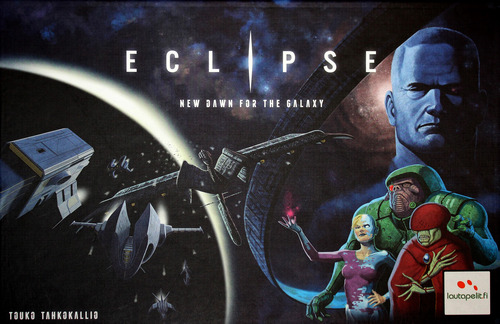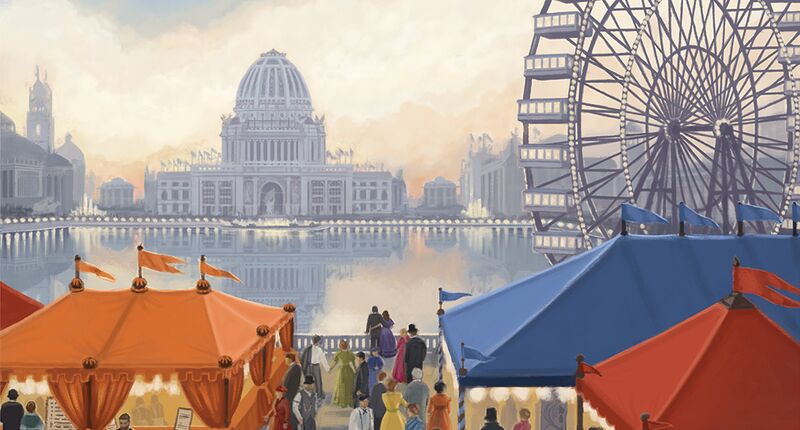As part of our May Spotlight on World’s Fair 1893, we strive to inform readers of little extra tidbits surrounding the game. Games are made by people, and one of those tidbits we enjoy is learning a little bit more about the people behind them. Some designers shy away from the public stage, while others enjoy being front and center.
In the case of World’s Fair, there was little chance we weren’t going to find some spokesperson for this fair’s creation. As it happens, we managed to pry away both the game’s up-and-coming designer Alex Kevern as well as publisher Randy Hoyt of Foxtrot Games from their work of putting the finishing touches on their painstaking recreation of the long lost Chicago landscape. They only have a few minutes to spare, though, so it had to be a brief.
So, try to keep up and not get distracted by all the cool exhibits.
Turns out, that was a real issue at the 1893 fair, where fair-goers could visit the great exhibit halls and circle the Grand Basin every day for weeks and still come across something new. There were hundreds of things to so, and thanks to the Midway, you were never far from good old fashioned Gilded Age entertainment either. It was a testament of its time, from civil engineering to insane amounts of organization, and yet it went down in history as a smashing success. Which, of course, meant that a game honoring it had some big shoes to fill.
Which is why it’s almost surprising how concise it turned out to be, capturing the essence of the what the fair offered but in an easy to digest package. In World’s Fair 1983, each player operates as one of the iconic fair’s organizers. Using a mild blend of area majority control and set matching, players must allocate their supporters to each of the game’s five major areas in the hopes of having the most of their people in those spaces at the end of the round – denoted by the game’s central Ferris Wheel. This allows you to turn in exhibit cards towards endgame point sets. After three rounds, whoever has managed to be the best at building up and diversifying their exhibit choices is the winner.
We wanted to know how they went about shrinking an entire world’s fair into a half hour experience. So come with us as we stroll the Midway with Alex and Randy to chat about what it took to recreate one of the greatest expos the world has ever seen. Be sure to grab some cracker jacks – they’re being tested here – and try not to wander off. Enjoy!
Round One Questions
CR: What was your Gateway Game?
Alex: My favorite games growing up were Rack-O and Sequence. But it wasn’t until I found Catan that I fell hard into the hobby. Maybe hard is underselling it. Between 2009 and 2012 I played about two thousand times online and won the National Tournament in 2012. Puerto Rico was the game that made me realize there was more to discover outside of trading brick for wheat. But I still love Catan to this day.
Randy: The first game I ever loved was Hungry Hungry Hippos. I wanted it so badly when I was 3, but my mom strictly followed the “Ages 4+” written on the box and got it for my fourth birthday. Since then, I have always loved games. My tastes have changed over the years, of course. I’d list the Project Gipf games and Catan as major inflection points for me in the last 10-15 years, but I have been playing games of some kind or another for as long as I can remember.
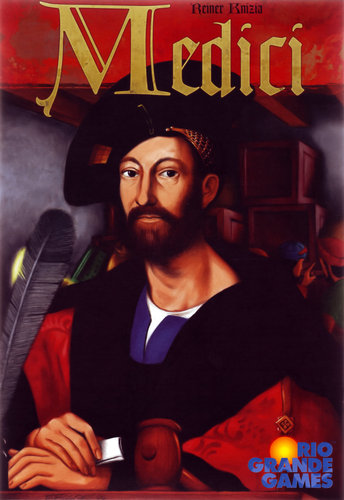 CR: What was the last game you really enjoyed playing (besides World’s Fair 1893)?
CR: What was the last game you really enjoyed playing (besides World’s Fair 1893)?
Randy: My oldest son (age 9) and I played Bruges today over my lunch break. I always enjoy playing that game.
Alex: By now, I have a pretty good handle on the types of games I’ll like, so it’s rare I’ll play a game I don’t enjoy. But the last game I played that I didn’t design was Medici, which is a perpetual favorite.
CR: How big is your game collection?
Alex: About 60 games. More if you count all the small box games that don’t take up much shelf space. I try to maintain that number, so when I want a new game, I will almost always try to trade for it first. So I’ve probably owned about twice as many at some point in time, before sending them on to a new life somewhere else.
Randy: It seems to hover around 80 games or so. I try not to keep games too long if they’re not getting played. I typically wait to buy new games from big publishers until I’ve had a chance to play them a few times and know they’ll hit the table a lot. I’m more likely to buy a game I haven’t played if it’s from a small publisher; if I find it’s not something I’ll play more than a few times, I try to find a good home for it.
CR: What is your favorite type of game to play?
Randy: I really love all types of games. I play a lot of games with my oldest son and/or my wife, and our sweet spot is probably games that take an hour to set up, play, and tear down. But there’s a wide variety of game types fit that time frame: light resource management games, set collection card games, dice games, abstract games, and others.
Alex: Classic or classic-feeling Euro games that have intuitive rules. If it has cards with text on them, I probably don’t love it. Cards with numbers are good though. The fewer words the better. So it boils down to almost anything by Reiner Knizia, Stefan Feld, Michael Schacht, and Wolfgang Kramer – plus new designers inspired by them.
CR: How do you feel about Monopoly?
Alex: It’s fine. I really don’t understand the outrage towards it. I mean, I guess I understand it. It’s ubiquitous, has been re-themed a million times, and it can take forever. But it seems like people have taken hating Monopoly as signal you’re a “real” gamer, but when played correctly, it’s still not terrible. Sorry! though…Sorry! is the freaking worst.
Randy: I have actually had some good experiences playing Monopoly in my life. I haven’t played it in a long time and I doubt I’ll play it anytime soon, but there’s no sense hating on it. One of my favorite little bits of trivia is that Rob Daviau worked on The Lord Of The Rings movie trilogy version of Monopoly when he was at Hasbro. It has a really clever, thematic variant. The One Ring travels around the board from The Shire (Mediterranean Avenue) to Mount Doom (Boardwalk); when it reaches Mount Doom, the game ends immediately.
On World’s Fair
CR: The World’s Fair of 1893 is a pretty unique game setting. What was the inspiration behind using it as your focus?
Randy: When Alex pitched the game to me originally, it had a different theme. I loved the mechanics and the gameplay, but I thought the theme didn’t capture the feel and atmosphere of the mechanics as well as it could. So Alex and I worked together to come up with a new theme.
The creative process is always messy, but the key element was how the set collection worked. Early playtesters commented that collecting the tokens should feel like building something. We explored a few different thematic options there, including the idea that players were collecting goods to build an ancient palace.
But that too just didn’t feel right: collecting building materials for a palace is not the same thing as building a palace. So that became one of the main thoughts running through my head: when is collecting the same as building? Museums, libraries, and art exhibitions fit that description. It was a few more steps to get to the idea of a world’s fair, but “collecting as building” was a big one.
CR: World’s Fairs have ebbed and flowed in popularity for more than 200 years. In that time over 300 such fairs have come and gone. What made 1893 stand out the most as the one to use for your game?
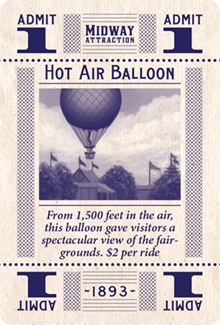 Alex: Even with their long history, I think World’s Fairs were in their apex of popularity in the late 19th century. London, Paris, and then finally, Chicago. When we considered a World’s Fair as theme, those were the leading contenders. Really what gave Chicago the biggest edge was the sheer historical significance of the fair, and the fact that it was just so darn interesting. It also didn’t hurt that I had lived there for over five years, and I absolutely loved it there.
Alex: Even with their long history, I think World’s Fairs were in their apex of popularity in the late 19th century. London, Paris, and then finally, Chicago. When we considered a World’s Fair as theme, those were the leading contenders. Really what gave Chicago the biggest edge was the sheer historical significance of the fair, and the fact that it was just so darn interesting. It also didn’t hurt that I had lived there for over five years, and I absolutely loved it there.
Randy: This was the first world’s fair to have a separate area (the Midway) dedicated to paid attractions with an emphasis on fun and entertainment. Because of that, this particular fair had a lighter feel and a broad appeal that fit the weight of the gameplay nicely. I described this feel for the artists as “grand, magnificent, and wonderful in a way that makes you smile without making you feel solemn.” The mechanics, the artwork, and everything about the game is meant to capture that feel.
CR: What was your inspiration for the mechanics and the gameplay?
Alex: The two biggest inspirations for the game were two timeless Euro games, El Grande and Ra. I wanted to create a game that seamlessly integrated area majority and set collection. The whole game was developed around the mechanism that you place a cube in an area and collect the cards there. Each turn I wanted players to have a tradeoff between controlling the areas they want to control and collecting the cards they want to collect.
CR: You certainly did your homework – this game uses a lot of notable exhibits, artifacts, and individuals from the 1893 fair. What was the research part of the game design like?
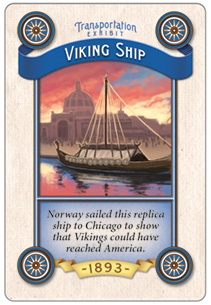 Randy: When we first had the idea for the 1893 World’s Fair, I read the book The Devil In The White City and watched the documentary Expo to get a high-level overview of the history of the fair, the people involved, and so much more. The bibliography in the book pointed me to a lot of good primary and secondary sources as I worked to map the mechanics of the original theme (regions, goods, and bonus actions) to the new theme (areas, exhibits, and influential figures).
Randy: When we first had the idea for the 1893 World’s Fair, I read the book The Devil In The White City and watched the documentary Expo to get a high-level overview of the history of the fair, the people involved, and so much more. The bibliography in the book pointed me to a lot of good primary and secondary sources as I worked to map the mechanics of the original theme (regions, goods, and bonus actions) to the new theme (areas, exhibits, and influential figures).
It was easy to identify the first few exhibits (the Ferris wheel, the Republic statue, the Viking ship) from these overviews, but identifying all 40 main exhibits and 28 Midway tickets required a lot of research.
My best sources for specific exhibits were all published in the year of the fair: A Week At The Fair (from Rand McNally), The World’s Fair As Seen In One Hundred Days, and the classic The Book Of The Fair. Items mentioned in these sources led me on plenty of wild goose chases to find pictures and descriptions in other sources. Plenty of the exhibits still exist in other museums or locations today, and it was always a treat to find modern-day colored photographs for exhibits at the fair.
CR: To that end, what would you say was the most memorable thing you learned about the real 1893 fair?
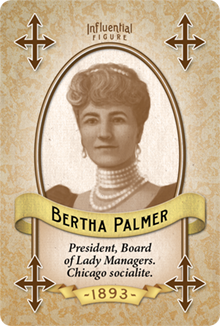 Randy: It was truly an unforgettable life experience, researching this fascinating cultural and artistic event. There is so much that I’ll probably never forget, ranging for grand trends in the history of mankind down to individual exhibits, quotes, and moments. I’ll mention just one of those, one that’s not mentioned anywhere in the game: Bertha Palmer (she’s a character in the game) commissioned the world’s first brownie to be served at the fair.
Randy: It was truly an unforgettable life experience, researching this fascinating cultural and artistic event. There is so much that I’ll probably never forget, ranging for grand trends in the history of mankind down to individual exhibits, quotes, and moments. I’ll mention just one of those, one that’s not mentioned anywhere in the game: Bertha Palmer (she’s a character in the game) commissioned the world’s first brownie to be served at the fair.
Alex: The research Randy did for this game was unprecedented. One of the most memorable things I learned was that one of the only remaining buildings from the fair is the Museum of Science and Industry in Chicago, which I had actually visited unknowingly years before. It was once the Fine Arts building, featured in the game, and had to be constructed with no expense spared in order for insurance companies to agree to insure the priceless works of art that were displayed inside..
CR: In World’s Fair 1893, you are strategically placing your supporter tokens amongst the game’s 5 area tiles, each corresponding to one of the “great buildings” of the fair. As the real fair had 14 such buildings, how did you decide on which ones to use in the game?
Randy: There were a few different factors. The exhibits in the Mining building just didn’t seem as interesting to people today as some of the other areas. We left out the Horticulture building because the exhibits wouldn’t seem that different from the Agriculture building. I really wanted to include the Anthropology building (especially the Alaskan totem pole exhibit), but there was too much similarity with the anthropological exhibits on the Midway tickets. We narrowed the areas down to the five that we thought would be distinct, would have the broadest appeal, and would best capture the variety and feel of the fair.
CR: The length of the rounds in the game are based on the number of Midway tickets players collect. How did that idea of a variable round length come about?
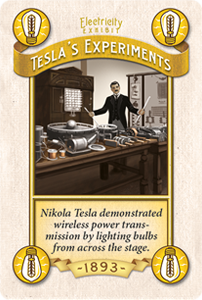 Alex: This was one of the major gameplay elements that was inspired by Ra. The original prototype had 12 ‘trigger’ cards, and the scoring rounds would be triggered when 4 trigger cards were taken. With so few of those in the deck, the scoring rounds were highly variable. Giving the Midways cards that function (of which there were already many more in the deck) and increasing the number that needed to be drawn to trigger a scoring reduced the variance and the swinginess, while still preserving the tension of the variable length.
Alex: This was one of the major gameplay elements that was inspired by Ra. The original prototype had 12 ‘trigger’ cards, and the scoring rounds would be triggered when 4 trigger cards were taken. With so few of those in the deck, the scoring rounds were highly variable. Giving the Midways cards that function (of which there were already many more in the deck) and increasing the number that needed to be drawn to trigger a scoring reduced the variance and the swinginess, while still preserving the tension of the variable length.
CR: The length of the round is all tracked via the board’s Ferris Wheel, which is pretty flavorful…
Randy: The round tracker was originally on a separate board off to the side. When I was talking about the game and the new theme with some playtesters, someone just had the idea: “You should have a Ferris wheel in the middle of the board!” Following that discussion, we landed on the idea of replacing the separate board and the round tracker with that central Ferris wheel.
CR: The game uses a mix of very simple area resource control and set matching while remaining easy to learn and relatively light to play. How important was keeping World’s Fair 1893 in the “Gateway Plus” scope of complexity to you?
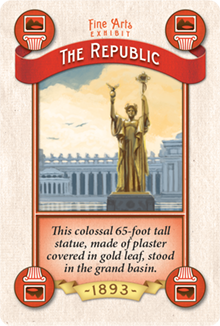 Alex: I didn’t design the game with a particular weight in mind, but I do think that my design process typically ends up with games in that range. So while the exact weight wasn’t necessarily important to me, it was important to me to keep the rules intuitive, and give players interesting and difficult choices that weren’t overwhelming. I also prefer games that can create a satisfying strategic experience in a shorter time frame, so there was definitely a deliberate effort to keep the game under an hour.
Alex: I didn’t design the game with a particular weight in mind, but I do think that my design process typically ends up with games in that range. So while the exact weight wasn’t necessarily important to me, it was important to me to keep the rules intuitive, and give players interesting and difficult choices that weren’t overwhelming. I also prefer games that can create a satisfying strategic experience in a shorter time frame, so there was definitely a deliberate effort to keep the game under an hour.
CR: Lastly, if we gave you access to our time machine (long story), and you could go back to see just one exhibit or talk to just one person at the 1893 fair in person, what/who would that be and why?
Randy: It’s too hard to pick just one exhibit! I would love to go back in time and stand in the main Court of Honor, at night, lit up with light bulbs powered by alternating current, overlooking the Grand Basin. That view alone would include multiple exhibits from cards in the game: Electric Fountains, Navy Searchlights, Gondolas, and the Republic statue…
Paul: There we’re so many incredible people and exhibits involved in the fair. If you could only beam me back to one spot, I would love to see the view from atop of the Ferris Wheel. To see the fair from that vantage point while inside such an impressive engineering marvel would be hard to beat.
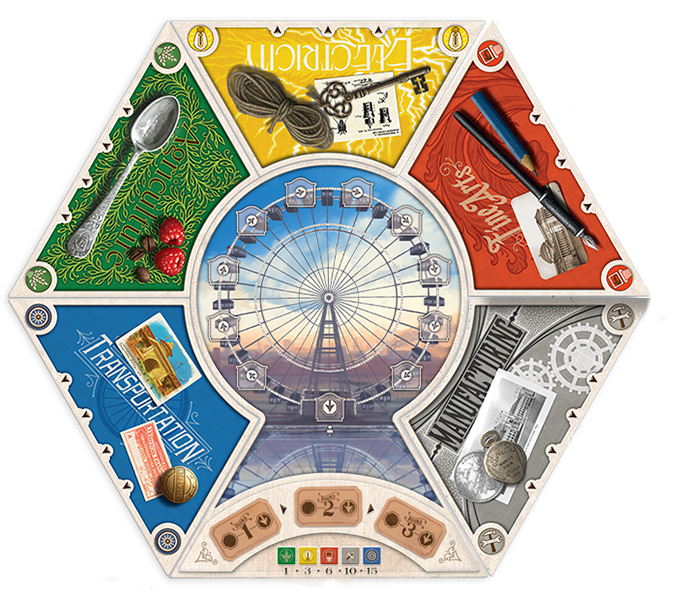
There was a lot to celebrate about this World’s Fair on multiple levels. From engineering and science to history and art, to culture and entertainment, this place seems to have had it all. And we figured, what better way to help you get a feeling for what it was like if you’re not like us and don’t have access to a time machine. So we figured, hey, let’s give out a copy of the game instead.
Here’s a fun fact though: World’s Fair 1893 is the second board game made about the Chicago Columbian Exposition. The first one was actually made in…wait for it…1893.
Yeah, there was a board game made for the fair about the fair.
While a pretty interesting history tidbit, it would have been really difficult for us to track down a copy – and we weren’t going to risk time hopping to steal a game trinket from little Gertrude.
Instead, we’re going to offer up the 2016 version instead by raffling off a copy to anyone wanting to come wander the fair grounds with us. Are you ready for some sightseeing at the fair? If so, let’s get to it!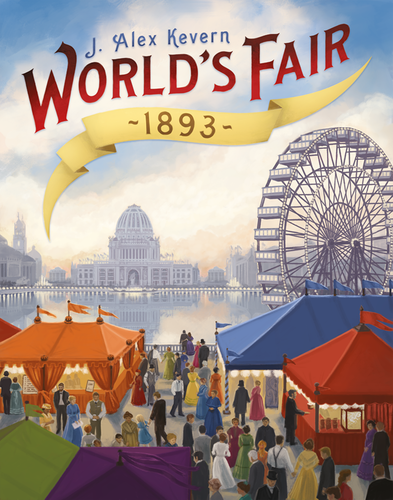
Photo Credits: World’s Fair cover and artwork by Foxtrot Games.

